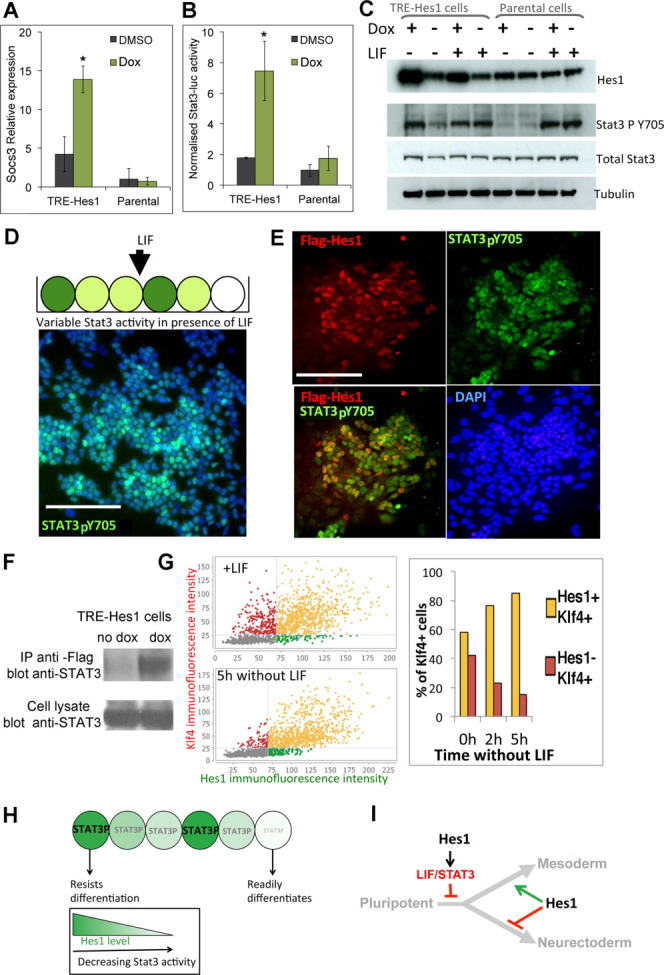Figure 7.

Hes1 cell-autonomously maintains Stat3 activity. (A): Quantitative polymerase chain reaction analysis for Socs3 in TRE-Hes1 embryonic stem (ES) cells or parental control cells in the absence of dox or induced with 0.3 μg/mL of dox for 48 hours. (B): Normalized luciferase activity in TRE-Hes1 ES cells or parental control cells or R26-NotchIC cells after transfection with a STAT3-luciferase plasmid and an SV40-renilla plasmid. (C): Western blot for indicated protein expression in TRE-Hes1 ES cells or parental control cells cultured in the absence of dox or induced with 0.3 μg/mL of dox for 48 hours in the continued presence of LIF or 24 hours after LIF withdrawal in the presence of fetal calf serum. (D): Antibody staining for Stat3-pY705 and DAPI (blue) in E14-TG2a.IV cells cultured in LIF + FCS. (E): Antibody costaining for pSTAT3 and for the flag epitope in TRE-Hes1 ES cells induced for 48 hours with 0.1 μg/mL of dox. (F): Hes1 proteins coprecipitate STAT3 in ES cells. TRE-Hes1 ES cells were treated with dox for 48 hours to induce flag-Hes1 or were left untreated. The cells were lysed and subjected to IP with antibodies to Flag followed by Western blotting for Stat3. (G): Quantitative immunofluorescence for Klf4 and Hes1 in E14-TG2a.IV cells cultured in LIF + FCS or after LIF withdrawal for the stated times. (H, I): Model. We propose that there is an early role for Hes1 to delay the transition toward differentiation through maintenance of STAT3 activity (G, H). Hes1 subsequently modulates lineage choice by regulating expression of Notch ligands (H). Scale bars = 200 μM. All data are represented as mean ± SD. *Indicates p < .05 relative to TRE-Hes1 no-dox control. Abbreviations: DAPI, 4′,6-diamidino-2-phenylindole; DMSO, dimethyl sulfoxide; dox, doxycycline; IP, immunoprecipitation; LIF, leukemia inhibitory factor; STAT3, signal transducer and activator of transcription 3; TRE, tetracycline responsive element.
